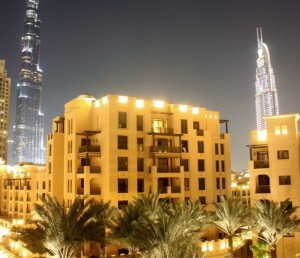By David Robertson www.business24-7.ae
What a building! What a launch! I was lucky enough to be invited to the opening of the Burj Khalifa last week and it was certainly worth making the six-hour trip from London. The “count up” to the unveiling of the building’s height was a great way to build anticipation, which was then unleashed in spectacular fashion with the fireworks display. No wonder so many television stations around the world carried the pictures.

I have watched the Burj grow on my visits to Dubai but nothing prepared me for how stunning it looked in its completed form. And how tall! It goes on and on and I suspect that wherever you are in Dubai in the future, eyes will inevitably be drawn to the Burj. The Burj will be an icon. It will define Dubai long after debt worries and the economic downturn are forgotten.
Unlike Manhattan, Dubai does not need to build up because of a lack of space. Rather, it has built the world’s tallest building to reinforce the message that Dubai is now a global city, a thriving city and an ambitious city. Nothing says that quite like a soaring glass and steel stalagmite blasting out of the desert.
Of course, the timing is not great. Launching an iconic building like the Burj weeks after Dubai World was forced to address its problems is unfortunate. Because of that, the international media has tended to see the Burj as symbolic of Dubai’s overreach and excess. My own view is that this is a rather hypocritical position to take.
After all, there are plenty of projects in other countries that could be accused of the same thing – the UK, for example, could certainly do without spending £12 billion (Dh71bn) on two weeks of sporting endeavour in 2012, for example. At least Dubai gets something solid and permanent for its dreams rather than just sporting headlines.
Also, the $1.5bn (Dh5.5bn) construction cost of the Burj is actually not that great and is certainly not excessive given what Dubai has gained. Bear in mind that we British built Wembley Stadium for £800 million (which at the time was the equivalent of about $1.5bn). I know which I would rather have between a football stadium and a 200-storey skycraper. It is true that the Burj is opening at a difficult time for Dubai’s property sector but stunning projects like this often fall foul of bad timing.
They are generally launched during booms because they require such huge leaps of faith to get started that this can only happen in an environment of optimism. But they take time to build and the Burj is certainly not the first skyscraper to open after a boom has ended. The Empire State Building, which opened in 1931 to a far bleaker economic environment, took more than two decades to become profitable and was nicknamed the Empty State Building by New Yorkers.
By comparison, the Burj is already looking to be a solid investment. Emaar, the company that built the tower, has sold 90 per cent of the property and it will make a 10 per cent profit. The investors who bought apartments or office space when the project was launched have doubled their money, although some foolish people will have had their fingers burnt after buying property during the boom with a view to flipping it for a higher price. I have no sympathy for them and the Burj should not be judged on their losses.
Although it is hard to see past the Burj Khalifa I was also impressed by the Downtown development that Emaar has created around the tower. Developers seem to have realised that people like to be able to walk around and the combination of waterfront hotels, mall and restaurants works well.
The Burj is a fantastic addition to Dubai’s already spectacular skyline. It takes guts to build something like this and Dubai’s boldness deserves to be rewarded.
The Burj Khalifa is going to be around for a long time and in a couple of decades nobody will remember what the economic circumstances were like when the building was launched.
The writer is Business Correspondent with The Times of London












